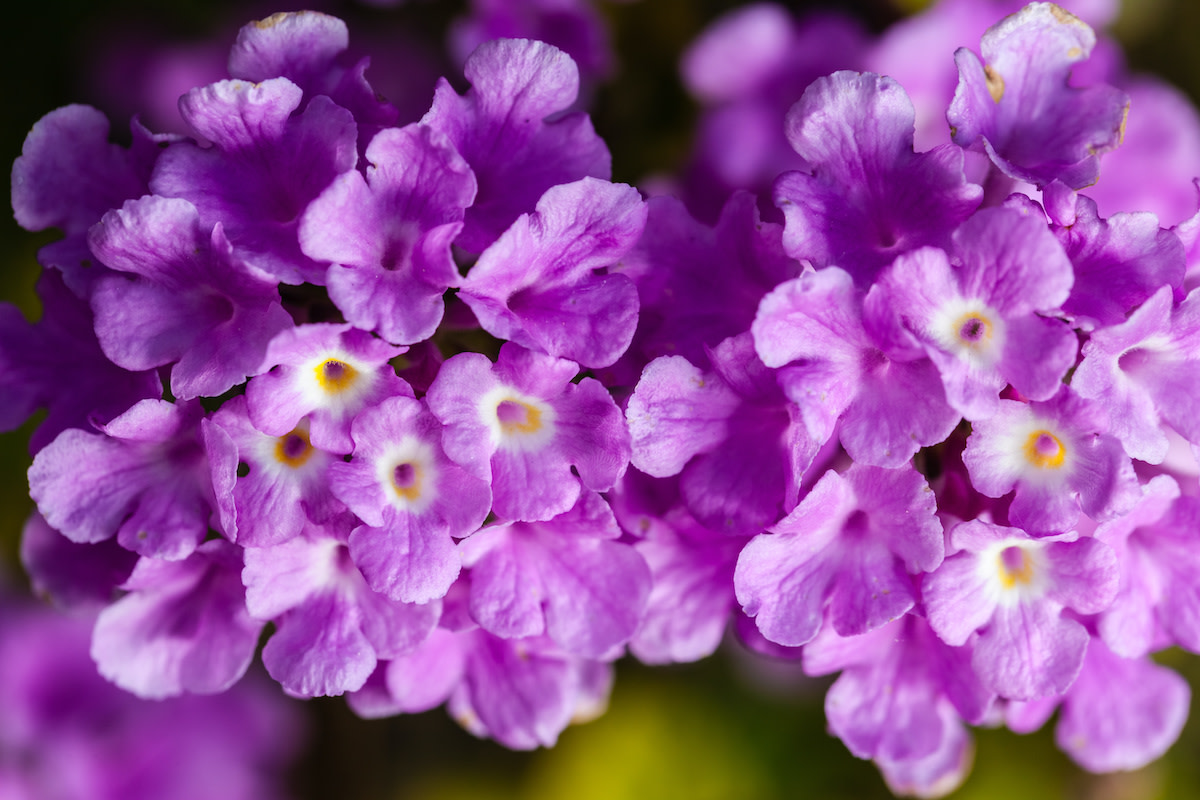Trailing Verbena Care: How to Grow Trailing Verbena Plants
Written by MasterClass
Last updated: Mar 14, 2022 • 3 min read
Learn about several varieties of trailing verbena and how to care for this versatile flowering plant.
Learn From the Best
What Is Trailing Verbena?
Verbena canadensis (more recently known as Glandularia canadensis) is a perennial flowering plant that goes by the common name “trailing verbena.” Trailing verbena produces blue, red, pink, white, or purple flowers and green foliage. Verbena flowers show up quickly after the first year of planting and have an exceptionally long bloom season, making them popular as a decorative ground cover or as an addition in rock gardens and flower beds. Growers use them due to their low spreading behavior to provide terrain with abundant blossoms, but these plants are also commonly grown in hanging baskets. Generally, trailing verbena plants are heat-tolerant and do best in USDA hardiness zones seven through eleven.
5 Trailing Verbena Cultivars
Many cultivars of verbena are trailing verbena hybrids that combine Verbena canadensis with other breeds. Consider a few notable varieties.
- 1. ‘Homestead Purple’: This cultivar is a very popular variety with large, deep purple blooms. Like most trailing verbena plants, ‘Homestead Purple’ grows to about one foot tall and about three feet wide. It blooms from early spring to the coldest parts of fall.
- 2. ‘Purpletop Vervain’: ‘Purpletop Vervain’ (Verbena bonariensis) reaches up to six feet tall and blooms striking purple flowers.
- 3. ‘Silver Anne’: Sometimes sold as ‘Homestead Pink,’ this variety produces dense clusters of bright pink flowers with a sweet scent. It blooms from summer to fall and is drought-tolerant.
- 4. ‘Greystone Daphne’: This is one of the hardiest verbena varieties and has a long bloom season from early spring to frost. It produces blooms with pink-tinged lavender flower colors.
- 5. ‘Snow Flurry’: This verbena cultivar is a bit more upright than other trailing verbena varieties and produces white flowers from spring through fall. It can thrive in full sun and does best in well-draining sand, loam, or silt soils. Avoid planting it in clay soil.
How to Grow and Care for Trailing Verbena
Consider a few general tips for maintaining trailing verbena plants.
- 1. Plant seedlings in full sun. Find a location that provides full sun and good air circulation. It's preferable to keep new plants moist for the first few weeks of growth while their root systems are developing. Plant your verbena seedlings in the middle of spring or in early summer.
- 2. Water your plant regularly. Once you've finished planting verbena plants in well-draining soil, they should be naturally drought-tolerant, though they will thrive best with regular watering. This is especially true if they are planted in window boxes or hanging baskets. To prevent root rot, make sure the soil doesn't get soggy.
- 3. Fertilize your plant with a slow-release fertilizer. Verbena planted in the ground shouldn't require much additional fertilizer, but it can benefit from a slow-release fertilizer in mid to late spring as well as after trimming. If the soil is too sandy and less enriched, more fertilizer will be helpful for new growth. It's best to avoid layering excess mulch since this can attract snails and slugs.
- 4. Deadhead spent flowers. Most varieties will grow fine without much pruning, but it can be a good idea to trim and deadhead flowers to encourage new growth.
- 5. Treat pest infestations and diseases quickly. Powdery mildew can accumulate on the leaves when there isn’t adequate spacing between plants or too much moisture. To avoid this, water trailing verbena in the morning or daylight hours so the soil has a chance to drain out and not remain too moist. Though verbena is quite pest-tolerant, spider mites can become an issue by creating web netting on the plants and discoloring leaves. Use a strong water spray on the foliage or insecticidal soap to remove these pests. Avoid using chemical insecticides that can harm pollinators like hummingbirds, butterflies, and bees.
Learn More
Grow your own garden with Ron Finley, the self-described "Gangster Gardener." Get the MasterClass Annual Membership and learn how to cultivate fresh herbs and vegetables, keep your house plants alive, and use compost to make your community—and the world—a better place.
